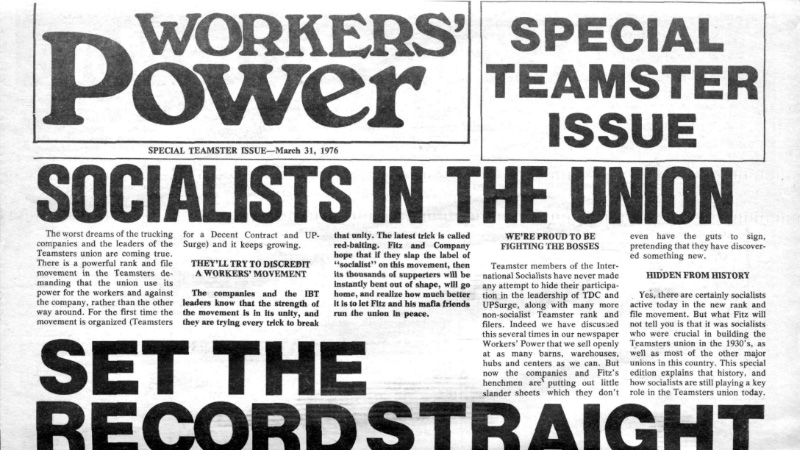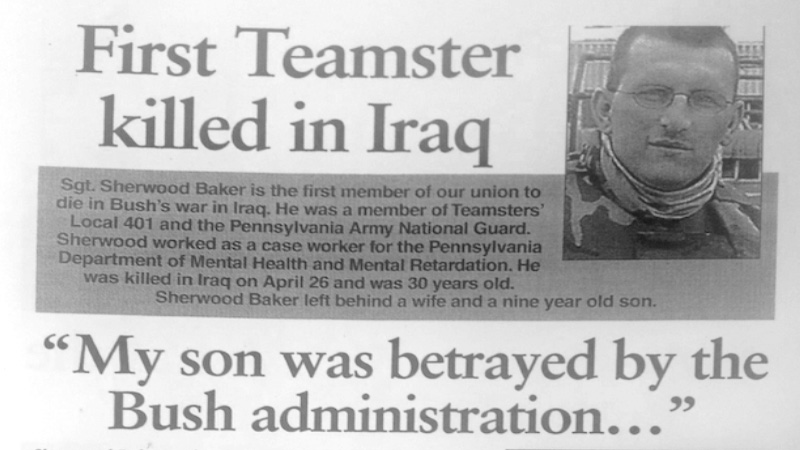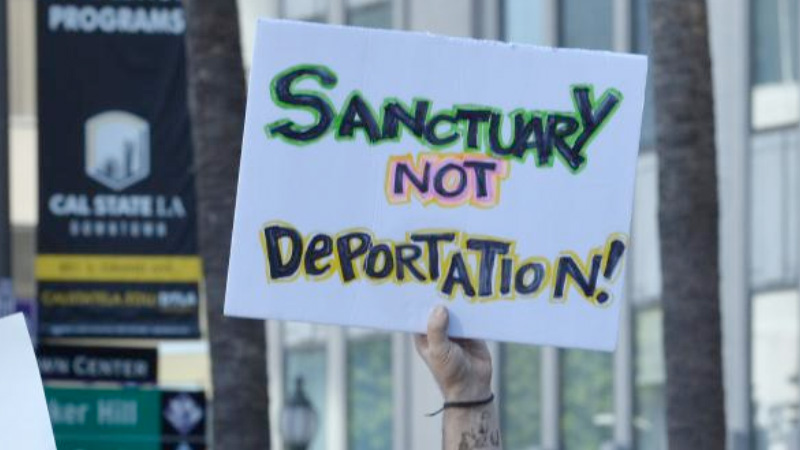I really enjoyed reading Eli R.’s recent article, “Life As A Rank-And-File Teamster,” discussing his work at United Parcel Service (UPS), and his eagerness to build a rank and file movement in the Teamsters. But, I was also dismayed by what I saw as a mistaken view of past efforts by socialists at UPS.
The article makes a sweeping indictment of “failed pamphleteering and cheerleading from a distance of various Left sects over the past 50 years,” which “has given us a strong demonstration of what not to do.” Counter-posed to this is the “need to build relationships through organizing in the workplace — the elementary site of capitalist exploitation and thus solidaristic worker resistance.”
Of course, I agree with the latter part of his statement. The importance of workplace organizing and solidarity “from below” should be indisputable. But I think Eli R. has set up a straw man argument regarding “left sects” which hides a deeper political argument. Is it really necessary to write out of history “failed pamphleteers” or “cheerleaders”—who would even know they ever existed? Who is this directed at? I’m not sure, but the hidden argument here is about the role of socialist politics in day-to-day organizing in the workplace today. That’s not surprising because in one version or another, it has been at the heart of debates about socialism and trade unionism for a long time.
Without revisiting that entire history, I want to state clearly that the 1970s-era International Socialists played a vital role initiating and sustaining the Teamsters for a Democratic Union (TDU), especially in its formative years. TDU, in turn, played an important role in shaping reform politics for many decades afterwards, long after the IS was gone. This, of course, doesn’t place the TDU above criticism.

Here I want to focus on the role played by socialists, and other radicals, involved in rank and file Teamster politics in the late 1990s and early 2000s. I did my most significant political work at UPS from early 1997 through 2006, when I was a member of the International Socialist Organization (ISO). I worked at Chicago’s Jefferson Street hub and was active in Teamsters Local 705 in Chicago and the local chapter of TDU. The ISO was a group that some TDU staffers dismissed as a “left sect.” What did that mean precisely? Usually this meant being derided for selling our newspaper Socialist Worker at work, building socialist public forums, and recruiting and training members in Marxism.
Some younger socialists may respond to this by saying: “So, what? Isn’t that what socialists are supposed to do?” However, the generation of U.S. radicals that came of age after the tumultuous year of 1968—and “turned to the working class” during the 1970s— saw their political organizations shattered by the late 1970s and early 1980s. Such political activities that were once commonplace were labelled “sectarian” in the years of neoliberal ascendancy. In far too many cases, very good and longstanding activists ran away from their own pasts to the point where you’d never know they were socialists, at least publicly.
However, despite the dismissive attitude towards us, the ISO did a lot of wide-ranging work at UPS during those years; work that I think young socialists today can learn from. We eventually had about a dozen or so members in the Teamsters in the late 1990s spread across the country. We had members in such varied locals as the gangster-like Local 251 in Providence, large reform locals like 705 or 174 in Seattle, and pro-Hoffa locals like 344 in Wisconsin, and Local 710 based in Chicago that stretched across three states.
The ISO’s work around UPS didn’t come out of nowhere, however. It built upon the work that members did in local and regional strikes, such as the Southern California drywallers strike in 1992, the Providence teachers strike in 1995, and national solidarity work for the “War Zone” battles centered in Decatur, Illinois. By the late 1990s, it was clear after many years of defeat that a new mood of resistance and fight back was emerging. Where opportunities presented themselves, a new openness to socialist politics could also be found among some of the most political of workers in these struggles.
The period of 1997 to 2006 included the run-up to the 1997 UPS strike, the witch hunt of Ron Carey, the restoration of the conservative ‘old guard’ under James P. Hoffa, the 9/11 terrorist attacks, the Iraq war, the emergence of a small but important labor against the war campaign, and the crack up of the reform leadership of Teamsters 705 under Jerry Zero. It was a heady time and we learned a lot from these joyous, difficult, and sometimes frustrating experiences.
Because UPS was a national employer and had hubs—sometimes several—and a huge work force in major cities, it allowed us to have a national focus for our solidarity work during the 1997 contract fight. The ISO spent the six months leading up to the August 1997 strike mirroring the Teamsters contract campaign with our smaller solidarity efforts. Our strategy was influenced by the work previously done by the 1970s-era International Socialists, especially the work they did in the Teamsters and the post office.
We did a lot of work from the ‘outside’—selling the Socialist Worker newspaper, leafleting, and organizing public forums—and from the ‘inside’ with members who got jobs at UPS. Most of the time it ended up being a mixture of the two. We tried to raise the political level of discussion around even the most mundane of workplace issues and conversely to make the political issues pressing in on the workplace from “outside” relevant to union activists. This would become more urgent following the 9/11 terrorist attacks and the war in Iraq.
Socialist Worker newspaper produced a special ‘Ready to Strike’ supplement that was wildly popular and distributed across the country during the week of the UPS strike vote in July 1997. When the strike came we marched on the picket lines and organized solidarity rallies in many locales. You can listen to the Support UPS Workers Solidarity Rally that the ISO organized with Teamsters 705 Recording Secretary Bennie Jackson, veteran union radical Jack Spiegel, UPS pilot Jodi Budenaers, and Staley “Road Warrior” Dan Lane in Chicago.
For all of the work the ISO did during those years, I’m most proud of the antiwar work following the 9/11 attacks and the Iraq war. Teamster General President James P. Hoffa, Jr. had joined the Iraq war drive and he was the only trade union leader on the advisory board of the pro-war lobbying group, the Committee for the Liberation of Iraq. In May 2002, President George Bush visited Chicago’s Jefferson Street hub and we handed out hundreds of fliers attacking his policies.
Kieran Knudsen, a part time UPS driver at the Chicago hub at Jefferson St. and a member of Uprise!, another radical group at UPS, introduced a resolution at the October 2002 general membership calling for Teamsters 705 to come out against Bush’s impending invasion—and it passed overwhelmingly. One of the most fascinating things about the discussion at the membership meeting was the number of Vietnam veterans who got up and spoke in favor of the resolution. I would have never known they existed or what they thought if it wasn’t for Kieran’s resolution.
After the media picked up on Teamster 705’s antiwar resolution, it became something of a bombshell that hit the labor movement. It was later included in Howard Zinn’s Voices of A People’s History of the United States. Teamsters 705 hosted the founding meeting of the U.S. Labor Against the War. When it was announced that the first Teamster was killed in Iraq (Sherwood Baker), we distributed hundreds of flyers connecting UPS to the Bush administration. Baker’s parents were well known antiwar activists with Military Families Speak Out.

One of the major weaknesses of the U.S. socialist Left is its lack of continuity. We always seem to be starting over with the thinnest of threads connecting us with the previous generation. We were lucky in the ISO to have veteran Teamster rebel Pete Camarata to lead us through the minefield of Teamster politics. Anne Mackie was a founding member of the ISO and a leader of UPSurge, the rank and file UPS group in the 1970s. We relied heavily upon a pamphlet How to Beat the Big Brown Machine by Mary Deaton that gave us a good historical understanding of UPS.
But we also learned from the experiences of the International Socialists and the TDU. We supported every progressive development in the Teamsters but we also expressed our own socialist views. For example, despite our best efforts TDU didn’t come out against the war in Iraq even though Teamsters 705 did when it was the second largest Teamster local in the country. Eventually many major trade unions opposed the war and the even AFL-CIO called for “rapid withdrawal” and an end to the occupation of Iraq.
These were the high points of the ISO’s work at UPS during the years 1997 to 2006, but connecting those high points were also the day-to-day work of being stewards, working for reform campaigns, and trying to survive in a brutal, crushing workplace. We couldn’t sustain the work at UPS for a variety of reasons but I’ve always thought the ISO’s work there during those years was not a finished product but something to learn from and build upon.
I like to think our political approach continued in the Teamsters by individual members long after the ISO ceased to have a presence at UPS. Tim Goulet, for example, a member of Teamsters 810 in New York and an ISO member, worked with his fellow union members to pass a “sanctuary union” resolution in response to the deportation of the Teamster sanitation worker Eber Garcia Vasquez in 2017. The resolution was later adopted by Teamsters Joint Council 16 representing 120,000 workers across New York City and Long Island.

For me, the sanctuary union resolutions and Teamsters 705 antiwar stance are examples of how a relatively small number of rank and file socialists can have an impact far beyond their numbers, and move the creaky machinery of the union into action. These examples also challenge some of the longstanding bias against raising broader political issues in workplace organizing that, unfortunately, have become dismissed as “left sectarianism.”
I would encourage younger socialists to discuss some of the history that I’ve put forward here and draw from it what is valuable for them. Socialist organizations always had, and continue to have, an important role in supporting a rank and file strategy. Doing this requires both deepening the understanding of so-called shop floor issues, and relatedly, bringing into the open workplace discussions of broader political questions. By looking at past efforts of socialists to do this, we can uncover a history that is not only more interesting and complicated, but also full of lessons for the future.

